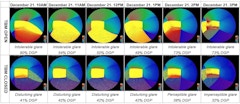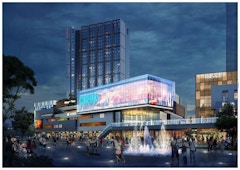
249 results
-

-
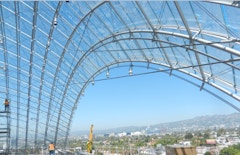
The Academy Museum of Motion Pictures, LA
- Paper by Roman Scheiber · Florian Meier
Renzo Piano Building Workshop designed a 290,000 sf museum celebrating the artistry and technology of film, becoming the world’s first museum and
-
Adaptive Reuse of Industrial Heritage Façades
- Paper by Bahar Basarir, PhD · Hatice Yasemin Cakir
With the developments in production, industrial facilities lost their function and were abandoned over time. The most frequent and often the most
-

Algorithmic Patterns for Facade Design
- Paper by Inês Caetano, António Leitão,
Recently, building envelopes have been exhibiting complex shapes and patterns, a trend supported by current digital technologies. Likewise, the… -

ACSA/EAAE Teachers Conference
- Event by Association of Collegiate Schools of Architecture (ACSA), European Association for Architectural Education (EAAE)
-
Retrofit Options for Historic Facades
- Paper by Carrie Davis, P.E., LEED Green Assoc. · George Kantrales, Ph.D. · Matt Barsotti · Andrew Schoenheit · Ty Vandergriff
Building design criteria requires that government buildings be designed for a variety of extreme loads including blast, hurricane, and impact
-

Working With Big Data
- Paper by Cristobal Correa,
Big data is having a noticeable impact on enclosure engineering design. With continuing advancements that liberate the geometrical form and the… -
Facade Maintenance Access
- Paper by Carmen Chun, MEng, P.Eng., LEED® AP · Leonard Pianalto MSc (Civil), P.Eng., LEED® AP, FEC
Facades are an architectural feature and an integral part of the building enclosure. To ensure that the facades continue their function, they must be
-

Digital Enablement for Manufacturing
- Paper by Melody Rees
Architectural design freedom achieved on high-end projects currently costs over $1,000/sq. Ft. Building materials have long been relegated to plane
-
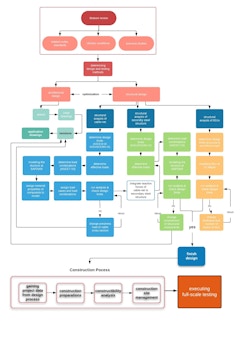
From Design to Experiment
- Paper by E. Yagdir CELIKER, MSc. · Oguz C. CELIK, PhD.
Flat cable-net facades are form-active structures which provide maximum transparency by means of point fixing components, tensioned cables, and
-
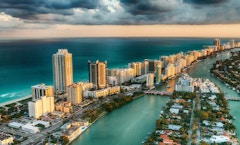
Facade Tectonics Forum: MIAMI
- Event by Facade Tectonics Institute
FTI held its celebrated Forum in Miami with thought leaders to explore the amplified threats of climate change in the unique urban context of Miami.
-

Establishing a Life Cycle Assessment Methodology for Innovative Facade
- Paper by Vikki Lew
Life cycle assessment was introduced in the 1970s as an analytical tool to quantify the environmental impact of a product, process, or service.
-

Seismic Movements
- Paper by Gijs Libourel, Daniel Segraves,
A common building upgrade to add value to existing commercial real estate is the renewal of the entrance lobby. The lobby facade is replaced to give… -
Invert Auto-Shading
- Paper by Jae Yong Suk · Doris Sung
Allowing sufficient amount of natural light while avoiding excessive sunlight penetration is often hard to achieve with static facade systems due to
-

Event Passed
–Expo CIHAC Digital
- Mexico
Facing a complicated global situation and always prioritizing the health and integrity of our allies and visitors, we have made the decision to hold Expo CIHAC 2020 in digital format . Revolutionizing once again the way to create business connections in the construction industry.
Industry Event by Informa Markets
-

-

Environmentally Responsible Wood Cladding
- Paper by Pratibha Chauhan, Workplace Strategist Doug Bergert, AIA, LEED AP, Senior Project Designer, Associate
This case study focuses on the solutions provided for the Bell Museum at the University of Minnesota. Our design team worked with the client to… -
Collaborative Methodology for Fastracking Challenging Facade Concepts
- Paper by Stuart Berriman · Peter Simmonds, Ph.D., FASHRAE, FIBPSA, FFTI
The goal is to explore the role and methodology employed between the architect and engineer as they look to resolve the opposing demands of design
-

Facade Tectonics Forum: NYC
- Event by Facade Tectonics Institute
.FTI's 2019 NYC Forum was an intimate, provocative and forward-looking dialogue with thought leaders from all sectors of the building industry; owners, architects, consultants, contractors and more.
-

HydroSKIN
- Paper by Christina Eisenbarth, M.Sc. · Walter Haase, Dr.-Ing. · Lucio Blandini, Prof. Dr.-Ing. M.Arch. · Werner Sobek, Prof. Dr.-Ing. Dr.-Ing. E.h. Dr. h.c.
Building envelopes cover a considerable part of the urban exterior surfaces, and to therefore have a significant leverage effect on the climate

